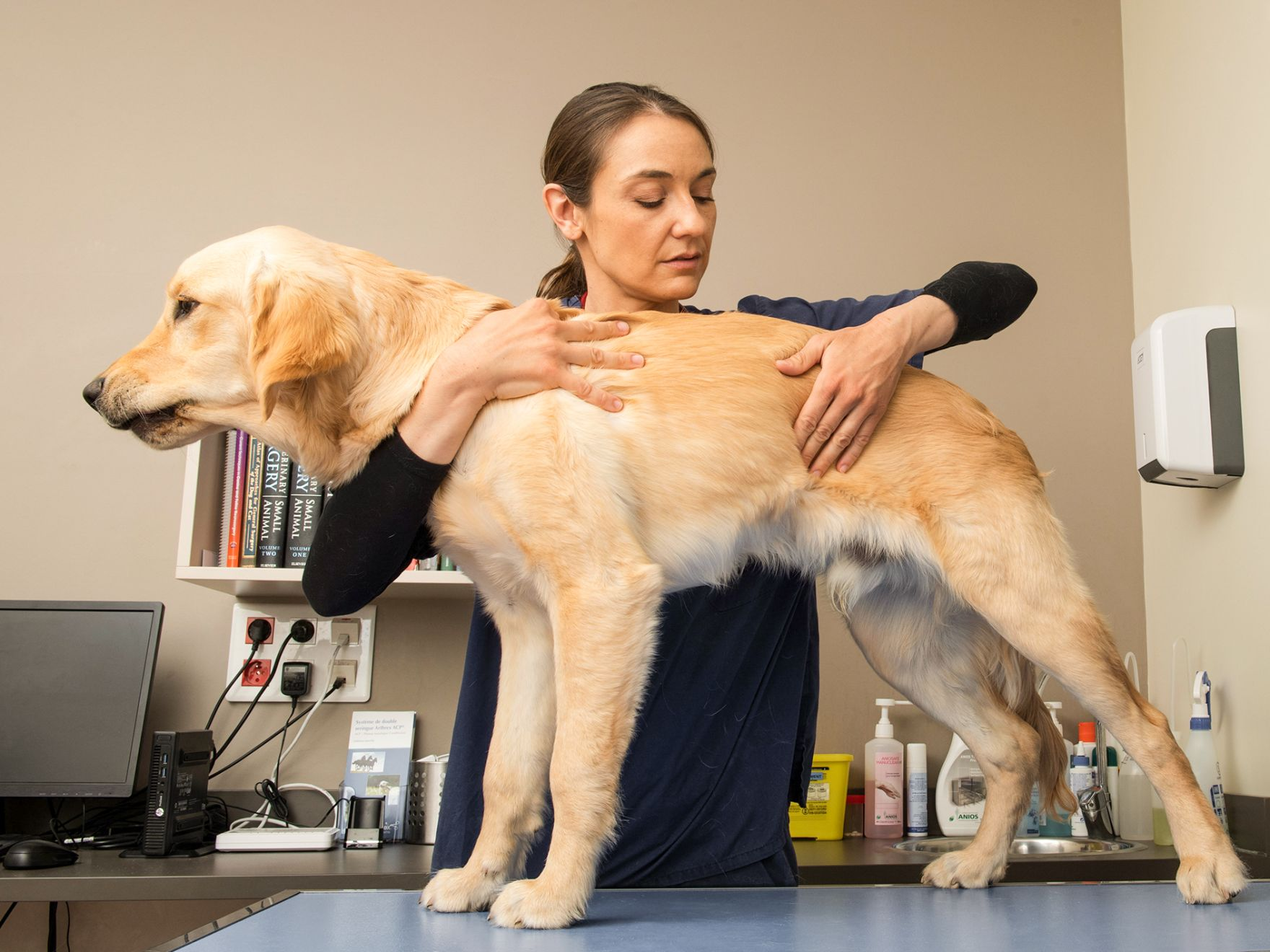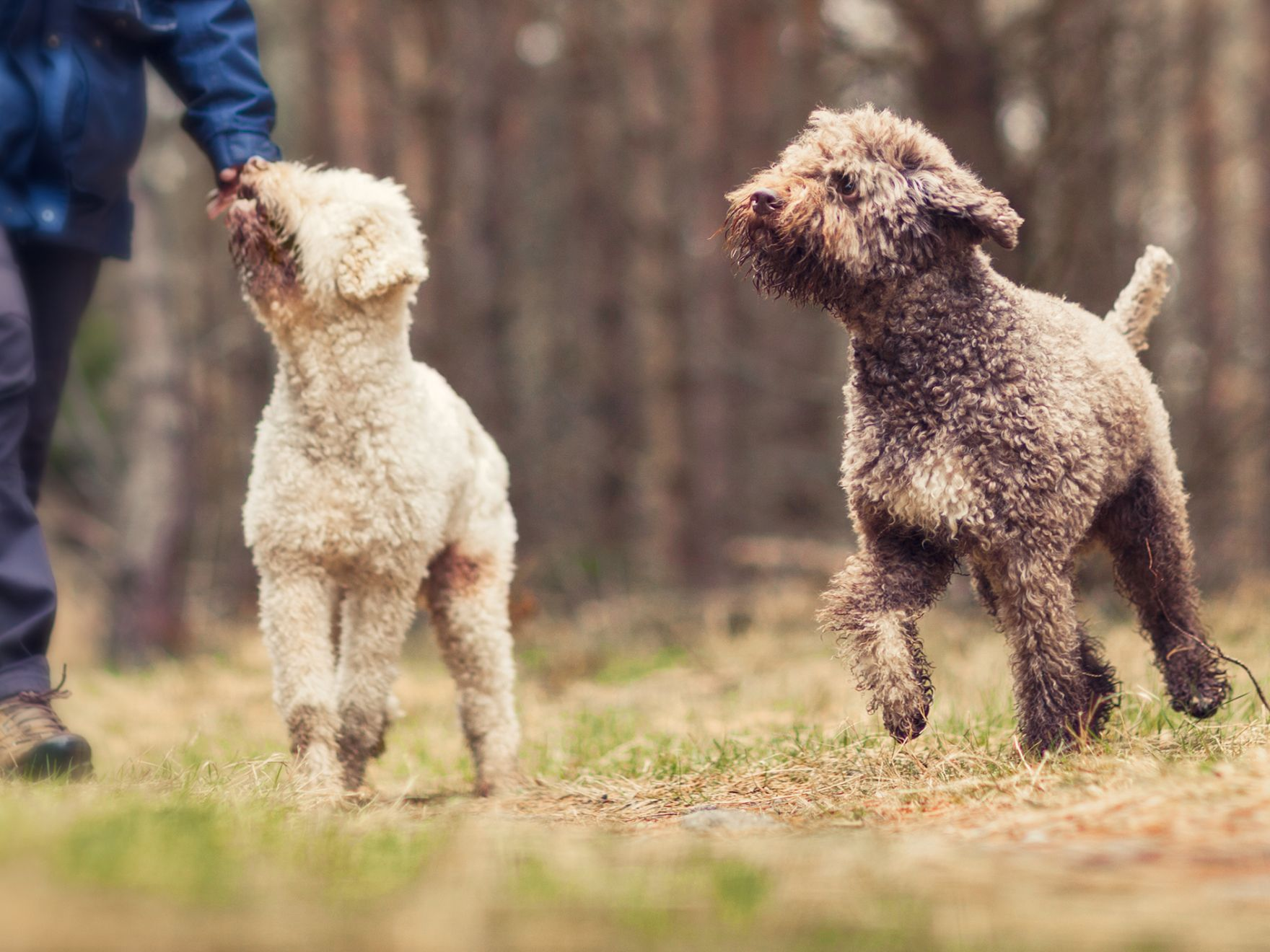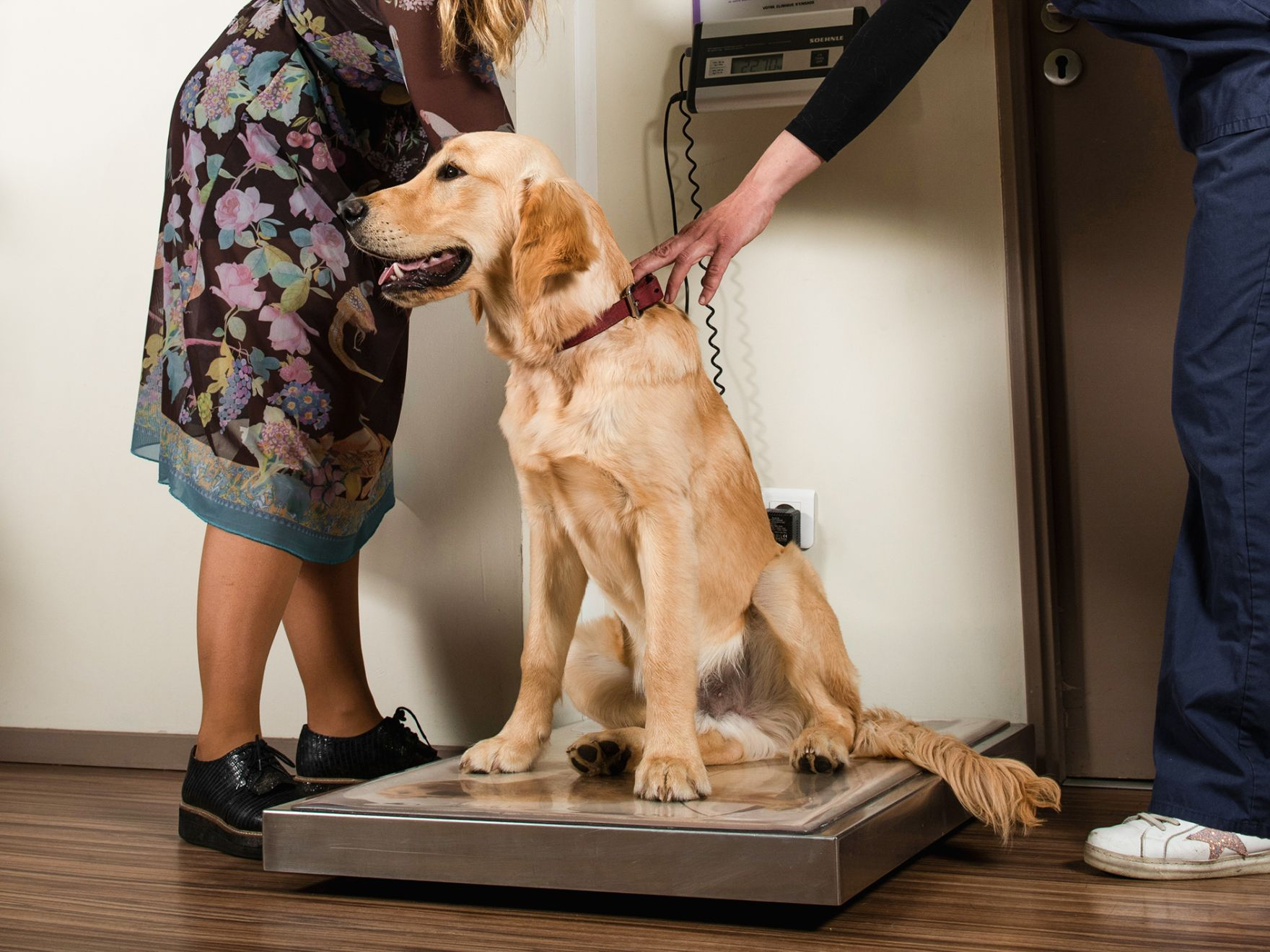Healthy weight isn't only measured on a scale

What is a dog’s body condition score?
The body conditioning score is used by vets to help you check whether your dog is overweight or underweight. It focuses on the look and feel of your dog because checking their weight alone doesn’t give an indication of a healthy shape.
The body conditioning score uses a 9-point system ranging from severely underweight at 1 to severely obese at 9. The indicators used for scoring are your dog’s ribs, waist, and abdomen, and a score of 4-5 is the ideal dog shape. This means a well-proportioned dog will have ribs that can be easily felt, a waist that can be seen from above, and an abdomen that tucks up behind their rib cage when seen from the side.
Your veterinarian can show you how to use the dog body condition score chart. It’s also important to visit them regularly so they can help you monitor your dog’s shape over the long-term.
How do I tell if my dog is overweight?
It’s important to check your puppy’s weight and shape from the start and to monitor them regularly to be sure they develop into healthy adults. If you don’t have a scale of adapted size (babyscale for instance), simply weigh your puppy by holding them as you step on your family scale and subtracting your own weight. Besides the weight, it’s also easy to pay attention to a few details when you pet them. First, you should be able to easily feel their ribs when massaging with your fingertips. Next, ask yourself a few questions: Can I see a clearly defined waistline when I look at my puppy from above? Does their abdomen tuck up behind their rib cage when viewed from the side? If not, your puppy may be overweight.
Speak to your vet on your next visit to learn about the body condition score and the best ways to assess your puppy’s shape. The more comfortable you are checking your puppy’s shape from the start, the more likely you will detect changes that require professional attention.
It’s crucial to identify if your dog is carrying too much weight and take action, as an overweight dog has a higher risk of serious and life-changing conditions. This can include diabetes, cancer, osteoarthritis and more.
A dog is classed as overweight when it is 15% to 20% over its ideal weight and is classed as obese when it is more than 30% over. It’s easy to underestimate how heavy your dog is though, so the best way to check if they’re gaining too much weight is a 3-step look-feel-weigh approach.
- Look at their behaviour and shape. Are they somewhat lethargic or get tired easily? Does their stomach sag or can you see their waist and the tuck of their abdomen behind their ribs?
- Feel their ribs – can you only feel them with heavy pressure?
- Weigh your dog - by weighing them regularly you can monitor any weight gain. Your vet can tell you their ideal weight based on their current weight and assessing their body conditioning score.


How to help your overweight dog lose weight
The great news is that both overweight and obese dogs can be managed. And getting your dog back to an optimal weight can help increase their quality of life. Dogs of a healthy weight have also been shown to live longer than those with obesity.
Being overweight is caused by eating more calories than are being used. So the important areas to address are your dog’s food and exercise. Ask your veterinarian about diets designed for overweight dogs. If you just decrease your dog’s meal sizes with their current food it may lead to nutritional deficiencies or begging. Make sure you stick to the portion size on the pack or talk to your veterinarian, and avoid giving treats in addition to this—or save some of their dry daily food allowance to use as treats.
Regular physical activity is essential for their overall wellbeing, as well as helping them lose weight and maintain a healthy shape. Ask your veterinarian about the right level and type of exercise for your dog, and only increase it gradually with your veterinarian’s guidance.
Speak to your veterinarian
If you have any concerns or questions about your dog’s weight or shape, it’s always best to speak to your veterinarian. They’ll be happy to help and can identify how overweight your dog is, if at all, and what actions you should take to help it lose weight or to advise you on how to prevent weight gain.
Likewise, it’s important to speak to your veterinarian before making any changes to your dog’s diet, exercise patterns, or lifestyle. Or before making any other decisions that could impact their health.
As no two dogs are the same, your veterinarian can give you advice tailored to your dog as an individual. This will be based not just on their breed, age and sex, but on factors such as any existing health conditions and whether or not they’ve been sterilized.

Healthy growth lasts a lifetime
Losing weight is more difficult than preventing weight gain in the first place, so it's important that healthy habits and behaviours are set from day one.
Health depends on activity
Activity is key to keeping your dog stimulated and at a healthy weight. The amount of exercise varies based on their age, weight and breed.